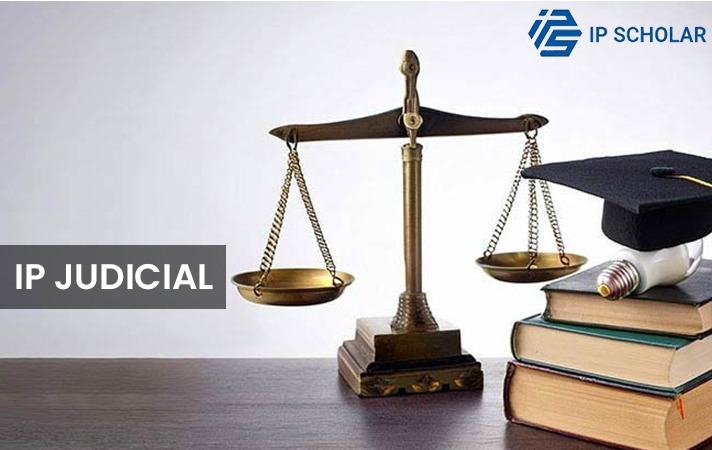
Invented Trademarks: Judicial Perspective
Invented trademarks, also known as fanciful trademarks, are the strongest category of marks in trademark law. They are completely made-up words or symbols that have no prior meaning in the language before being used as a mark. Because they are unique and require no prior thought or imagination to distinguish them from other terms, invented trademarks are inherently distinctive and receive the highest level of protection under trademark law.
Legal Framework for Invented Trademarks
Under the Lanham Act (U.S. Trademark Act), trademarks are classified based on their level of distinctiveness. Invented trademarks fall into the highest category of distinctiveness and are considered inherently distinctive, meaning they are automatically eligible for trademark protection without the need for secondary meaning. The distinctiveness spectrum is as follows:
- Fanciful Marks (Invented Marks): Completely made-up or coined words (e.g., "Kodak", "Xerox", or "Pepsi").
- Arbitrary Marks: Common words used in an arbitrary context unrelated to the product or service (e.g., "Apple" for computers).
- Suggestive Marks: Marks that suggest qualities or characteristics of the goods or services but require some imagination to link them (e.g., "Netflix" for streaming services).
- Descriptive Marks: Marks that directly describe a quality or characteristic of the goods or services (e.g., "Best Pizza" for a pizza restaurant).
- Generic Marks: Marks that refer to the general category of goods or services and cannot function as a trademark (e.g., "Computer" for computers).
Courts' Role in Evaluating Invented Trademarks
The judiciary plays an important role in ensuring that invented trademarks meet the necessary legal criteria to qualify for protection. Here are some key considerations:
- Uniqueness and Creativity:
- Invented trademarks are those that do not have any meaning prior to being used in commerce. Because these marks are newly coined or artificially created, they are inherently distinctive.
- Courts evaluate whether a mark is truly invented (i.e., completely new) or whether it is merely a derivative or modified version of an existing word. For example, "Kodak" was an entirely invented word with no previous meaning, and courts have consistently upheld its protection.
- No Need for Secondary Meaning:
- Unlike descriptive marks, which need to acquire secondary meaning (consumer recognition of the brand over time), fanciful marks are automatically considered distinctive. Courts do not require evidence of secondary meaning for invented marks because they are already distinctive by their very nature.
- For instance, in the Xerox case, the U.S. Supreme Court confirmed that the mark "Xerox" was inherently distinctive and immediately protected because it was an invented term.
- Likelihood of Confusion:
- Even though invented marks are strong, courts will still evaluate whether there is a likelihood of confusion with other marks in the same market. The strength of an invented mark, however, generally reduces the likelihood of confusion because it is highly unique and easily distinguishable.
- For example, "Kodak" for cameras is an invented mark that is highly unlikely to cause confusion with any other mark, given its distinctiveness.
- Use in Commerce:
- Courts may consider whether the invented mark is being used in commerce in a way that suggests it is associated with the specific goods or services in question. This is especially important when the mark is initially challenged in terms of non-use or abandonment.
Key Judicial Decisions Regarding Invented Marks
Several landmark cases have shaped the judicial treatment of invented trademarks, particularly in defining what qualifies as an inherently distinctive mark. Below are a few important decisions:
- Kohl’s Department Stores, Inc. v. Macy’s, Inc. (2008):
- In this case, Kohl’s sought to prevent Macy’s from using a mark similar to "Kohl’s." The court reaffirmed that fanciful trademarks like "Kohl’s" enjoy the highest level of protection, reinforcing that the term itself was sufficiently unique to be protected against infringement.
- In re Dial-A-Mattress Operating Corp. (2001):
- The case involved the term "Dial-A-Mattress", which was contested for its distinctiveness. While the term was not an invented mark (it was partially descriptive), the case highlighted the importance of a mark being distinctive in order to qualify for protection under trademark law. In contrast, an invented term like "Kodak" would automatically be protectable.
- In re Leiner Health Products, Inc. (2002):
- This case dealt with the term "Fizzy" for a line of carbonated beverages. The court ruled that "Fizzy" was a descriptive mark, not an invented one. It further highlighted that while invented terms (like "Kodak") are immediately protected, terms that describe a feature of the product may face hurdles in protection.
- Xerox Corp. v. Media Technologies, Inc. (1998):
- In this case, Xerox was able to protect its trademark for copiers and related services, reinforcing that invented marks like "Xerox" enjoy strong protection. The court emphasized that such marks are inherently distinctive and do not require secondary meaning to be protectable.
- Warner-Jenkinson Co. v. Hilton Davis Chemical Co. (1997):
- This case examined whether the mark "Hilton" was inherently distinctive. Although not an invented term, the case reinforced that invented marks are afforded the strongest legal protection. It affirmed the court's general preference for distinctiveness when determining the strength of a mark.
Judicial Criteria for Determining Invented Marks
Courts evaluate whether a mark is invented based on the following factors:
- Creation of a Completely New Term:
- The mark must be a completely new term that did not exist in the common language prior to its use as a trademark. It cannot be derived from or closely resemble existing words or phrases unless those words have no prior association with the product or service.
- Example: "Kodak" was invented by George Eastman, and it has no meaning in English before its association with cameras and film.
- Not Descriptive:
- Invented marks must not describe the characteristics, quality, or function of the product or service. They should be abstract and unrelated to the goods or services they represent, making them unique and strong.
- Example: "Pepsi" for a soft drink is an invented term that doesn't describe the product.
- Distinctiveness at the Time of Registration:
- Courts consider whether the mark is inherently capable of distinguishing goods or services. Invented trademarks are inherently distinctive, meaning they can function as indicators of source without requiring additional proof of recognition by the public.
- Example: "Xerox" for photocopiers is an invented mark that immediately indicates the source of the product.
Benefits of Invented Trademarks
- Strong Legal Protection:
- Invented trademarks are afforded the strongest legal protection, as they are unique and easily distinguishable from other marks in the marketplace.
- Exclusivity:
- Because invented marks do not have a common or descriptive meaning, they offer a high level of exclusivity and prevent competitors from using the same or similar marks to market similar products.
- Easy to Enforce:
- Enforcing rights over invented trademarks is relatively straightforward because they are easily recognized and there is little risk of confusion with other marks in the marketplace.
- Market Identity:
- Invented trademarks often develop strong brand identities. Consumers tend to associate invented marks with a single source, which contributes to brand loyalty and recognition.
Examples of Invented Trademarks
- Kodak (for photographic equipment and services)
- Xerox (for photocopying machines and services)
- Pepsi (for soft drinks)
- Google (for internet search services)
- Kleenex (for tissue paper products)
- Zynga (for online gaming)
These marks are entirely invented and have no prior meaning in the English language, making them extremely strong in terms of trademark protection.
Conclusion
Invented trademarks are the strongest and most protected type of trademark under U.S. trademark law. Courts afford them strong protection due to their inherent distinctiveness, meaning they can be automatically registered and do not require proof of secondary meaning. The judiciary plays an essential role in evaluating whether a mark qualifies as invented, and when it does, the courts typically uphold its protection, making it one of the most valuable forms of intellectual property for businesses.
Because they are unique and have no prior meaning, invented trademarks serve as powerful identifiers for the source of goods and services, helping companies establish strong brand identities and prevent competitors from using similar marks that could confuse consumers.



